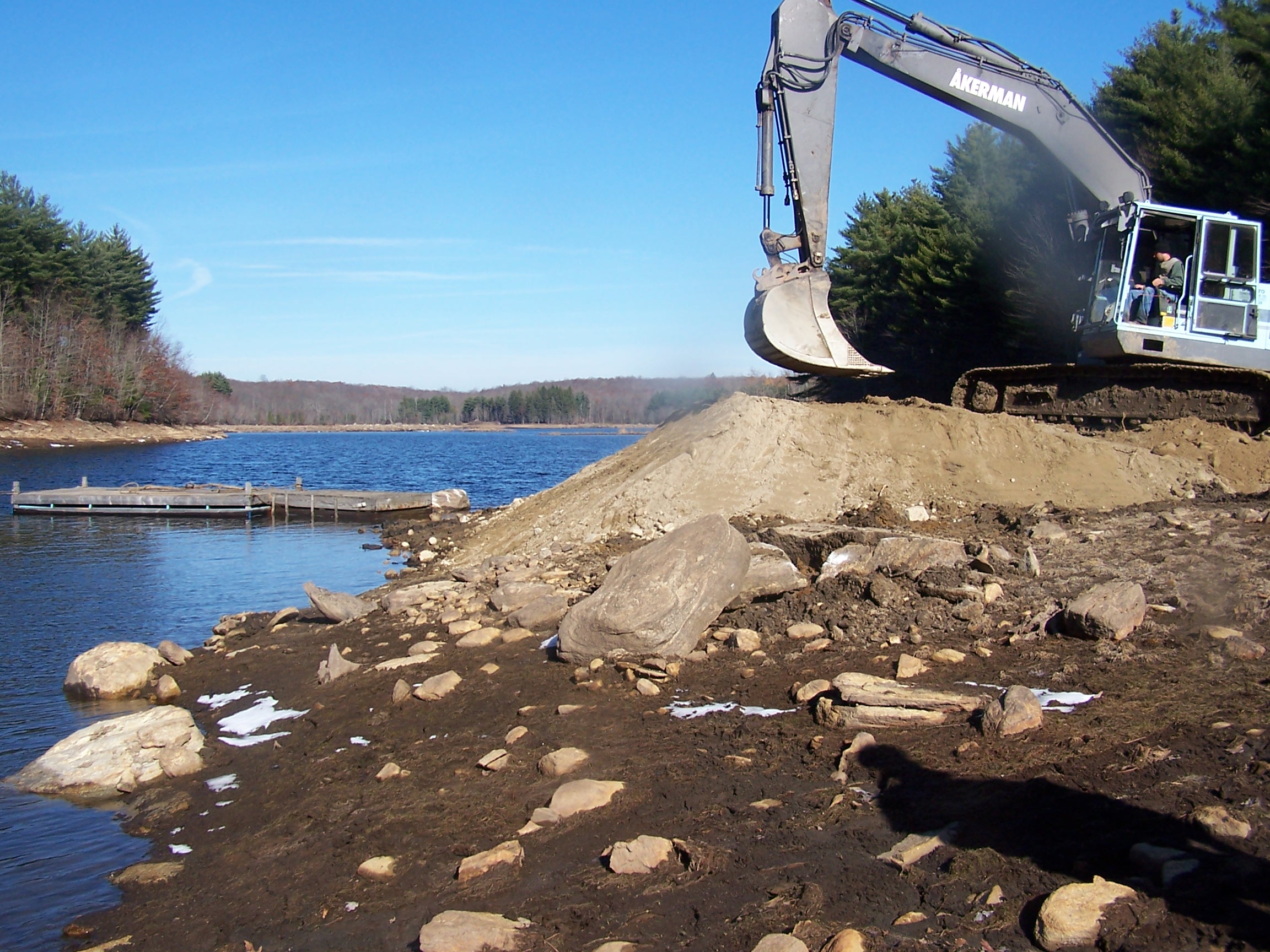
1.) This is a berm that was built to elevate the closed end and fill-tubes of a single closed end (SCE) AquaDam, referred to as a starting bank. The starting bank allows the SCE AquaDam to be filled to its proper height and to retain water inside of it. To ensure proper installation and functionality of a SCE AquaDam, it is essential to have a starting bank that maintains a higher elevation than the body of the AquaDam. The open end and fill-tubes of the SCE AquaDam must remain elevated above the full height of the dam along its designated path. It is important to note that an AquaDam will only reach its maximum height at the lowest elevation point along its designated path.
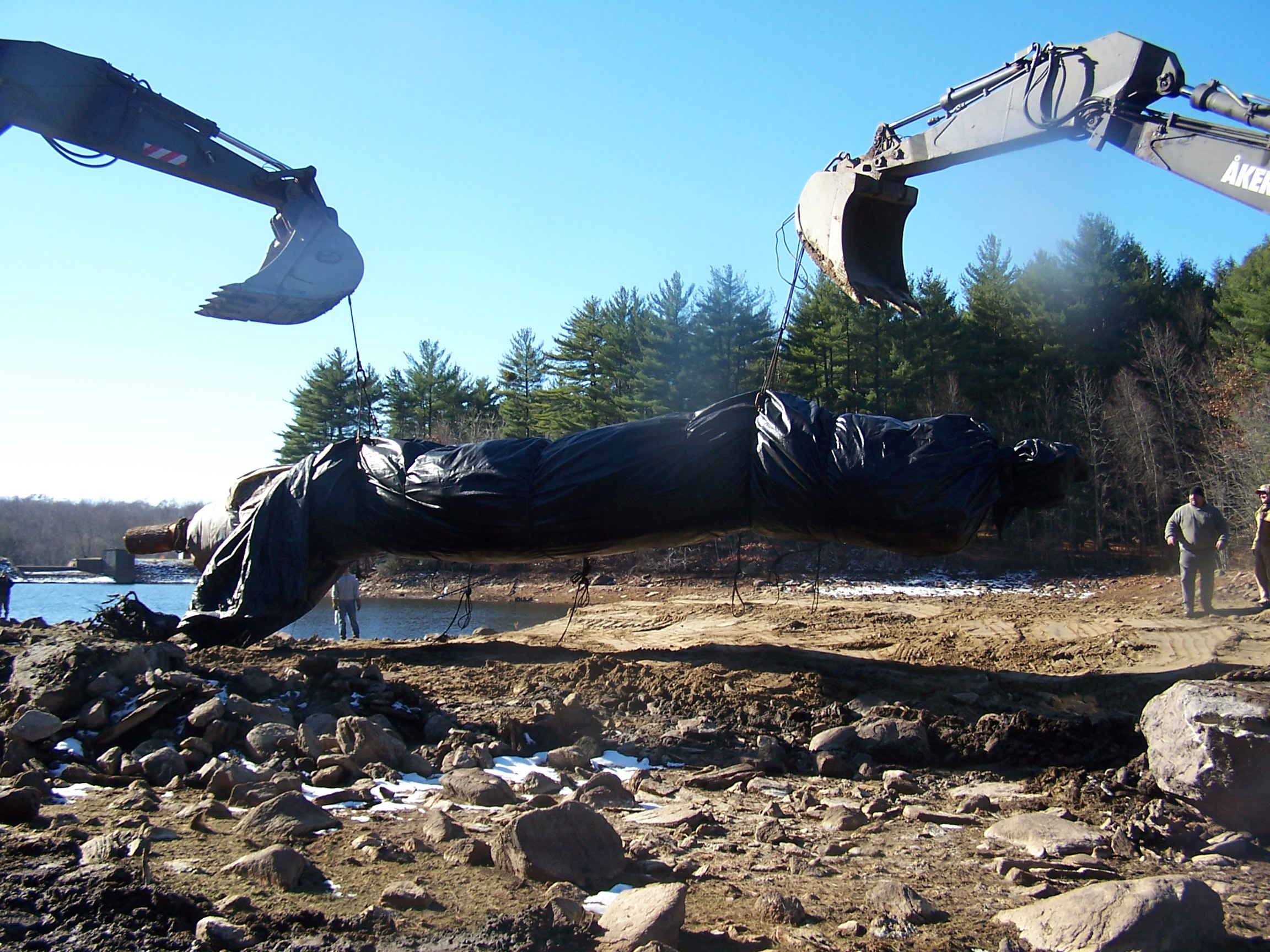
2.) The first AquaDam for this project is being moved to its starting bank with two excavators. AquaDams are delivered in a rolled-up form, similar to a carpet roll on a wooden beam. They are wrapped in a protective covering and include lifting ropes or straps for easy transportation.
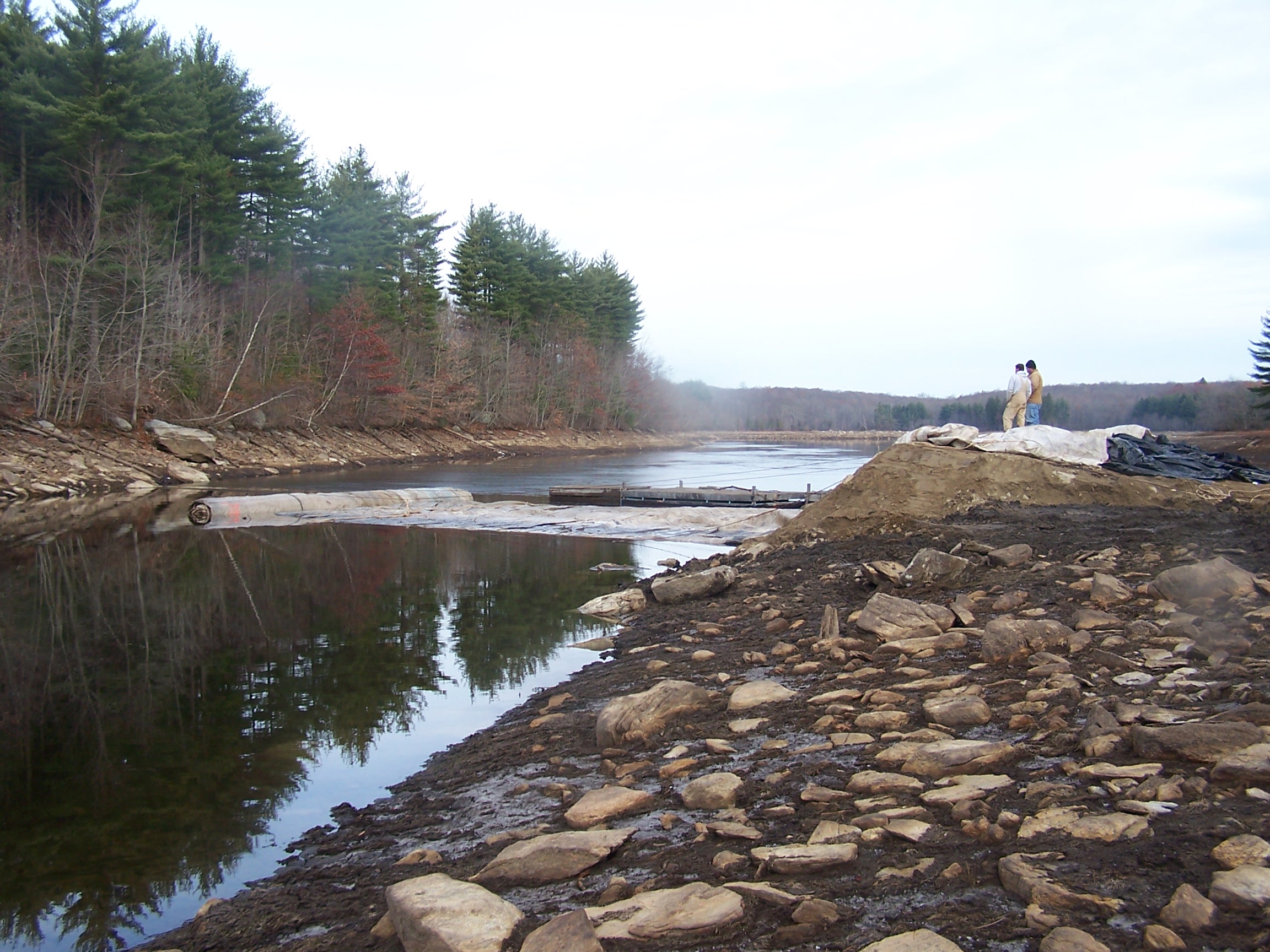
3.) The first SCE AquaDam has been launched from its starting bank, is being filled with water, and has almost unrolled to its ending bank. Ropes have been anchored at shore, run under the AquaDam, over top of the roll, and back to workers who control the roll while the dam is being filled with water. The ropes are used to hold back the roll, while the unrolled length fills and gains head above the surrounding water.

4.) The first SCE AquaDam has unrolled across the channel into a line configuration, bank to bank. The AquaDam will now need to finish being filled with water. Workers draw the water to fill the AquaDam from the greater body of water side of the AquaDam.
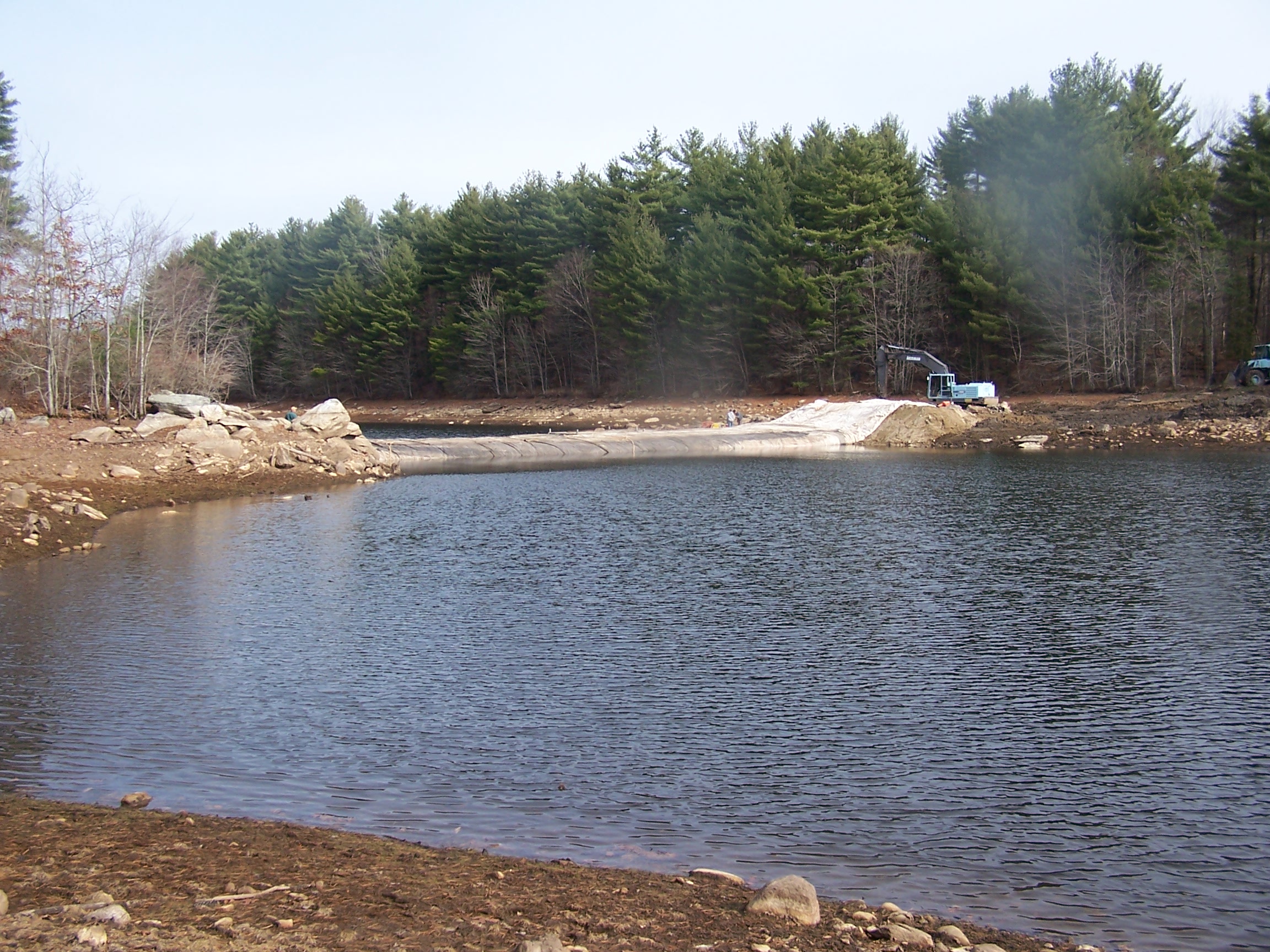
5.) The cove has been isolated and the SCE AquaDam will need to finish filling to its rated height.
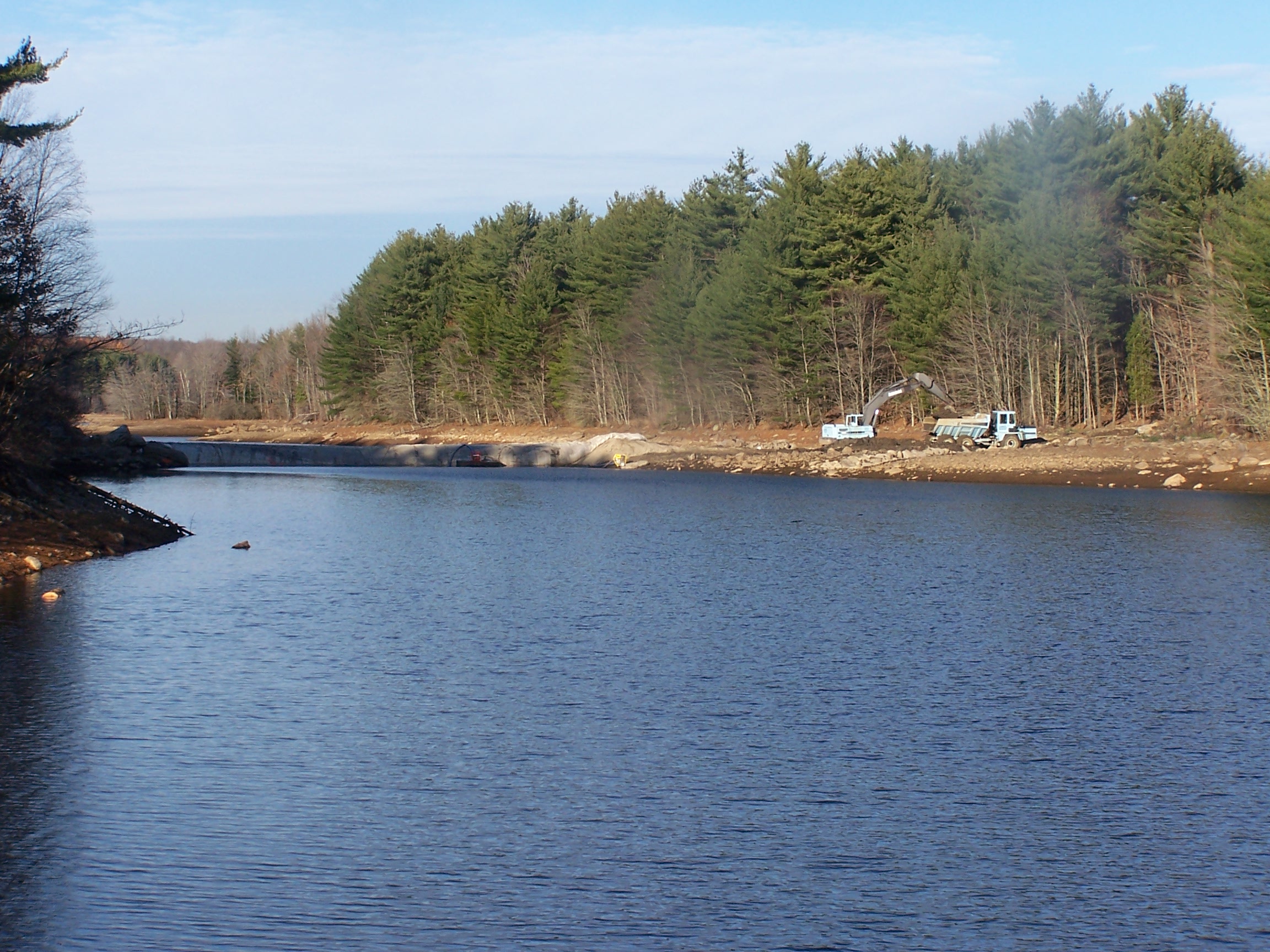
6.) At this point the first SCE AquaDam is almost full. Notice that the open end and fill-tubes remain higher than the body of the AquaDam, on the right.
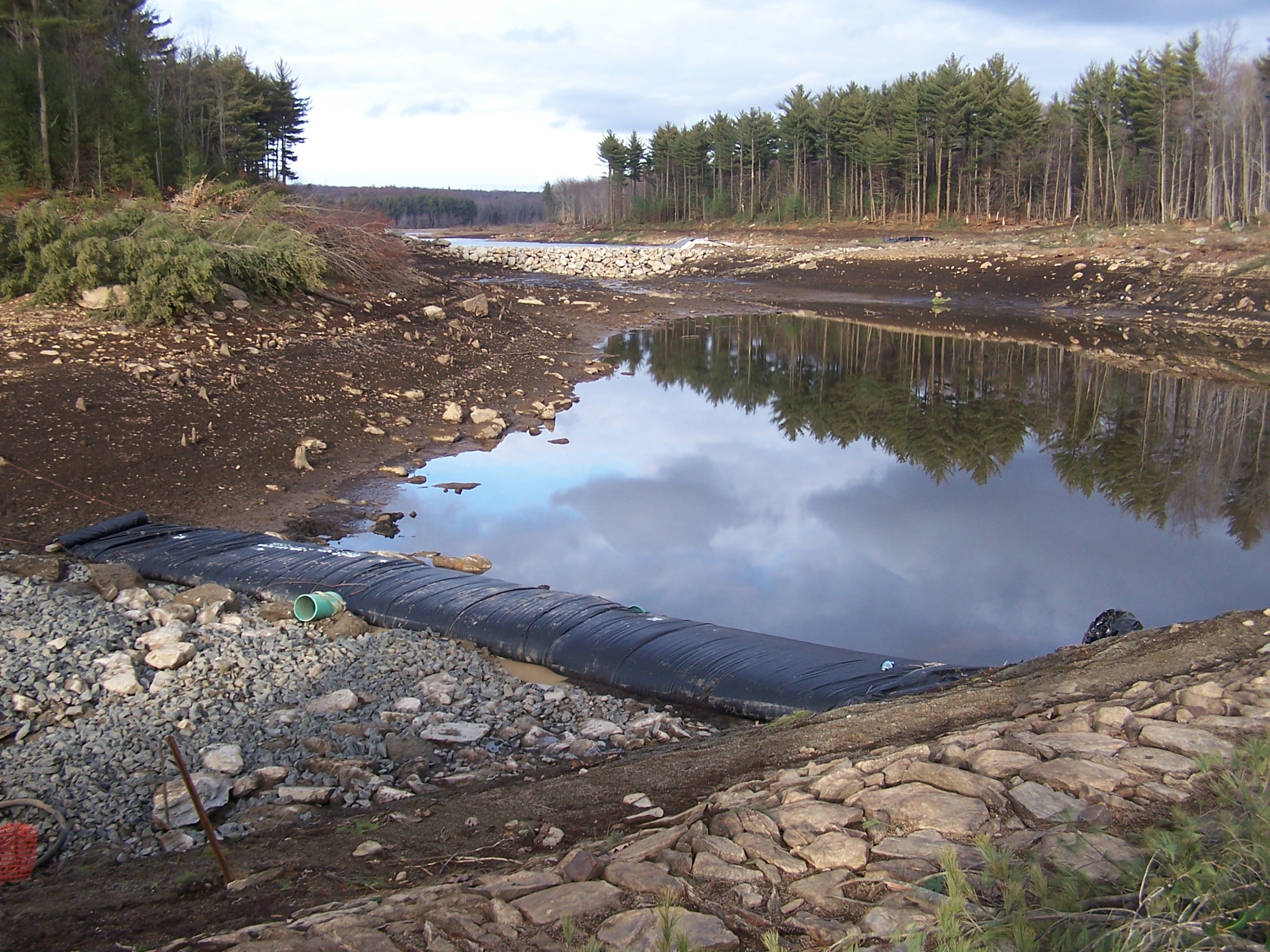
7.) The green pipe protruding from beneath the second SCE AquaDam serves as a mechanism to manage excessive water depth. In the event that water levels rise too high behind the AquaDam, the pipe provides a controlled outlet for the water to flow through.
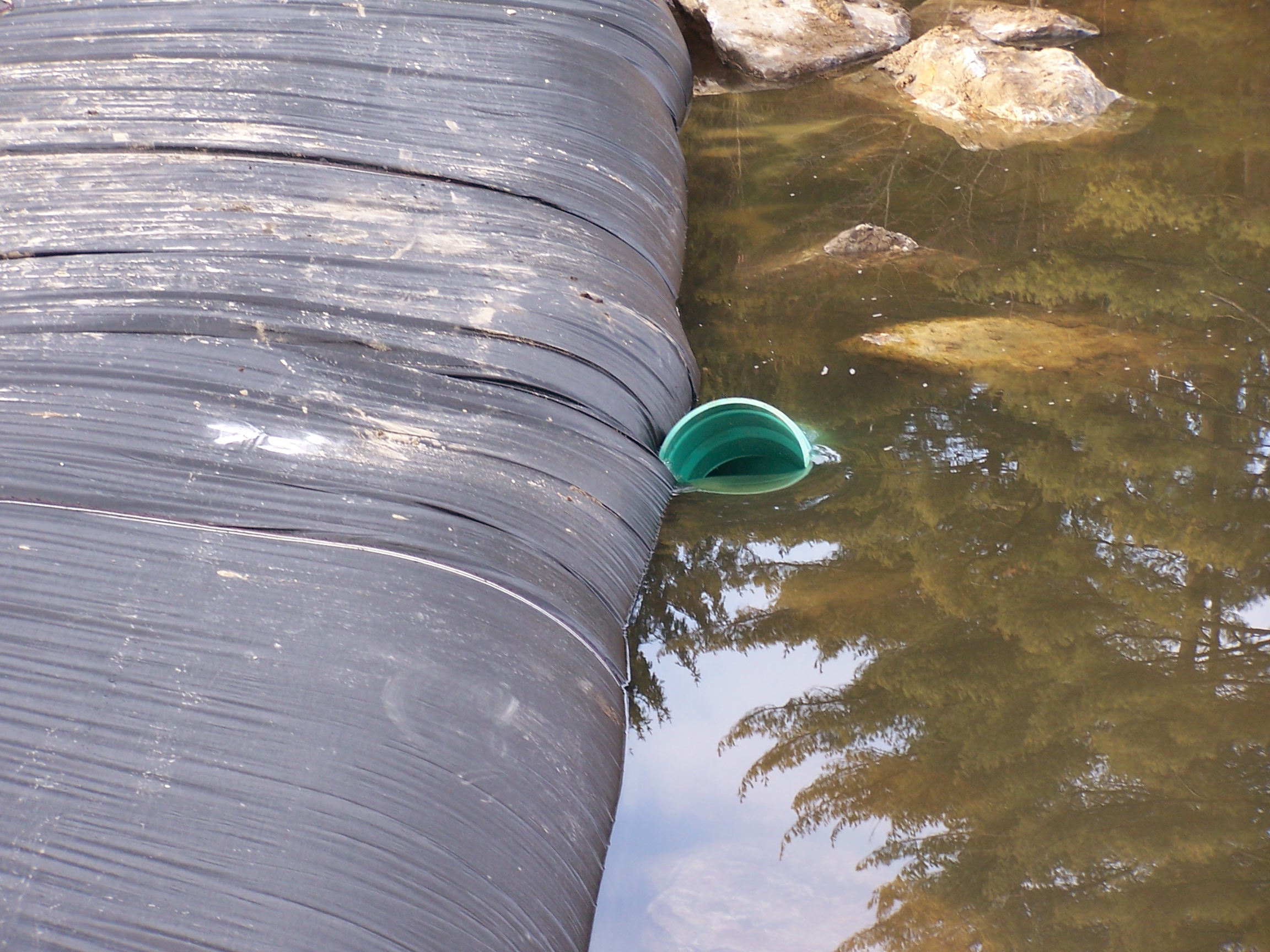
8.) This was the intake side of the overflow pipe. This pipe was installed to help prevent the AquaDam from washing out and help to keep the water level at a manageable depth.
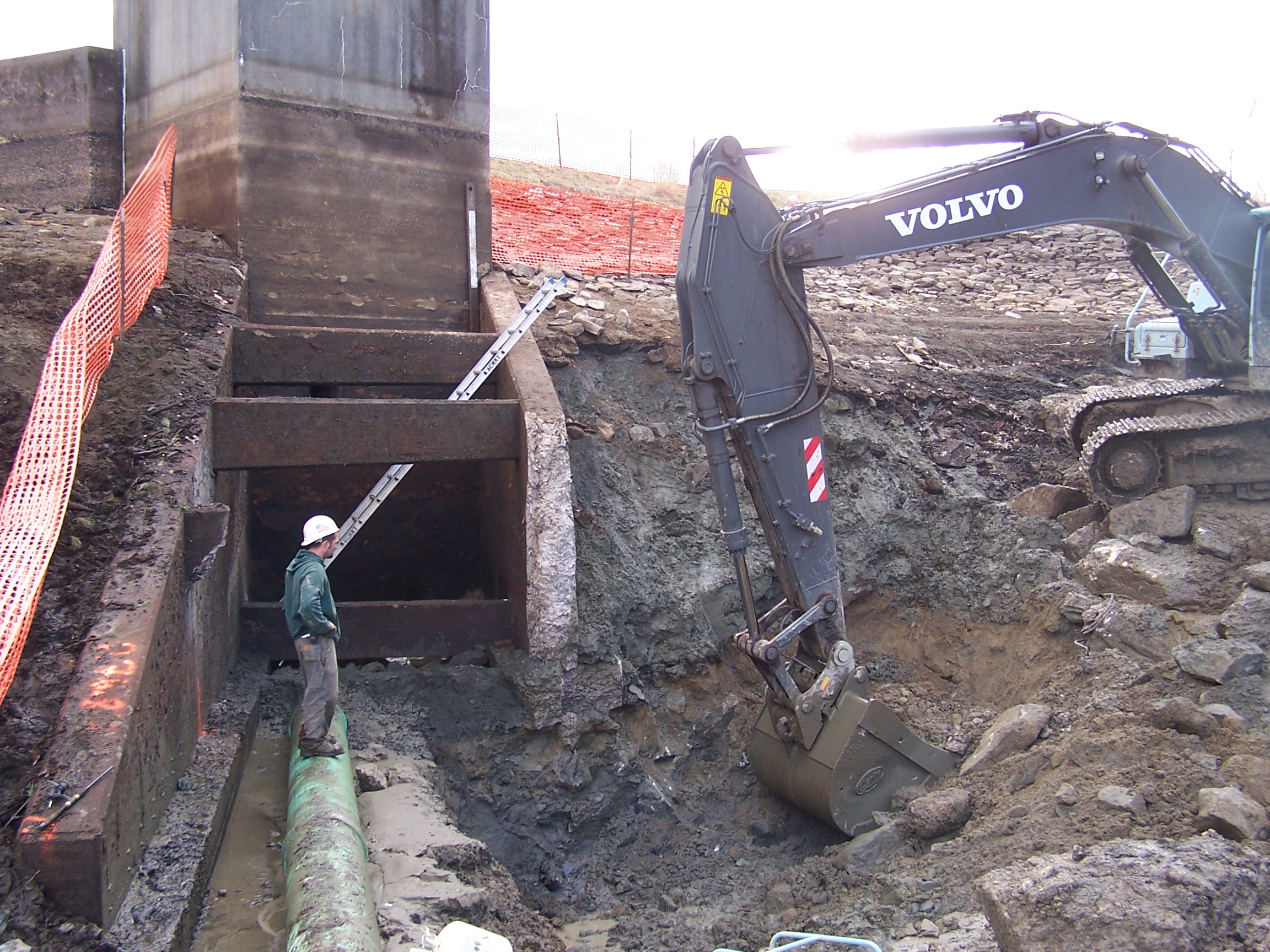
9.) With the AquaDams up and working, repairs can be done to the damaged structure.
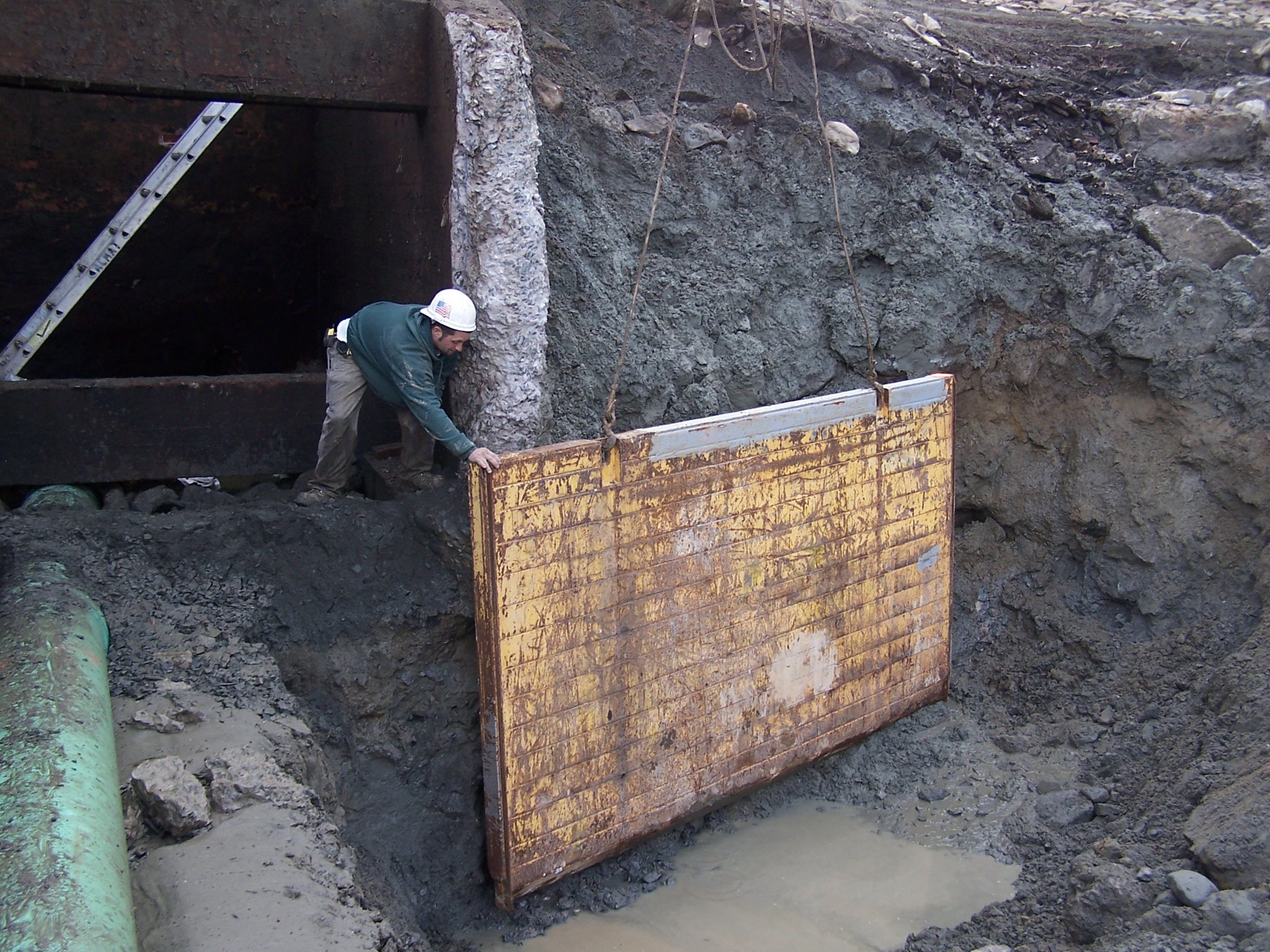
10.) Workers lower a metal plates into the excavated hole to help prevent the work area from collapsing in on them.
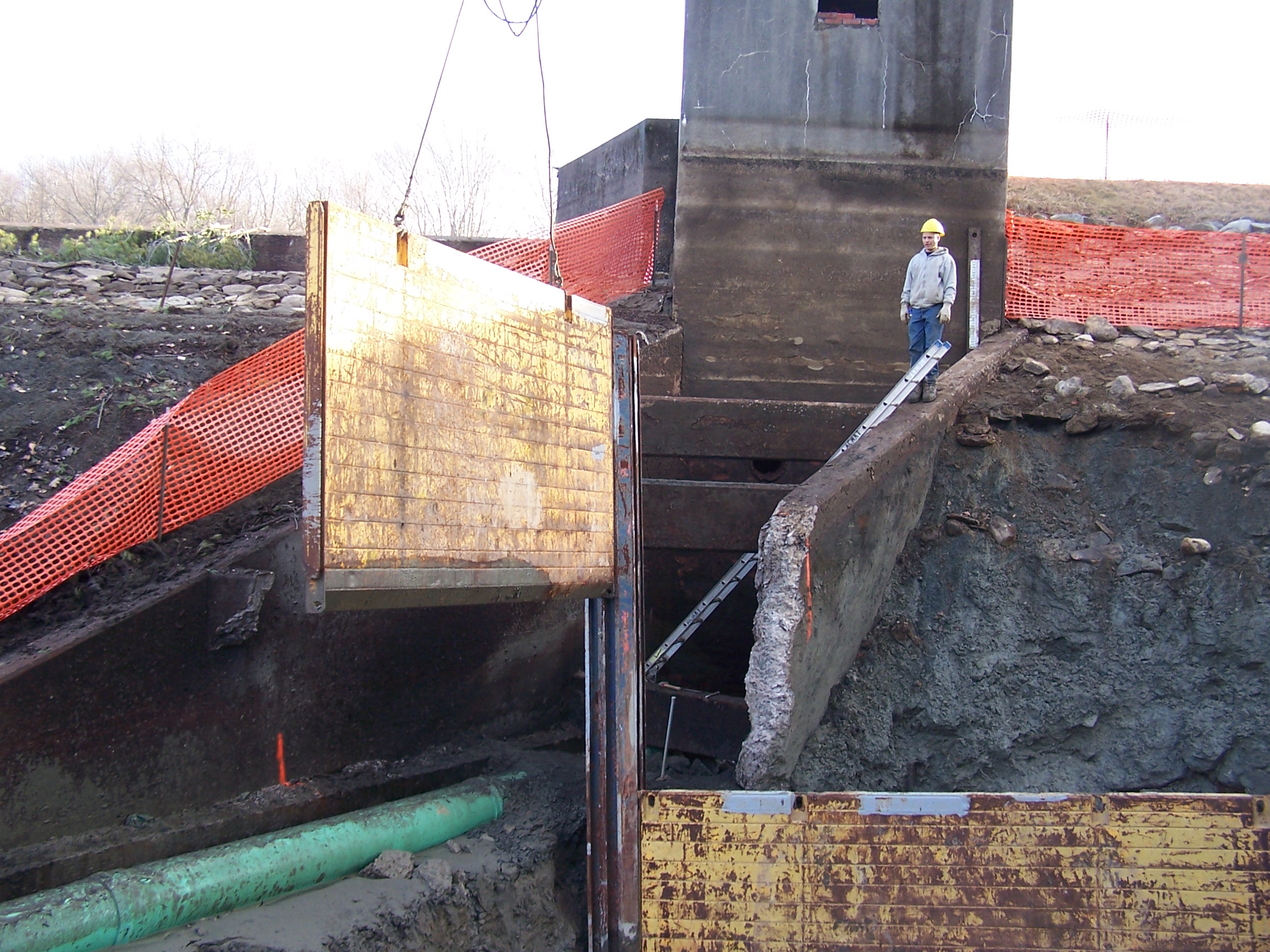
11.) Workers carefully lower the next plate into place.
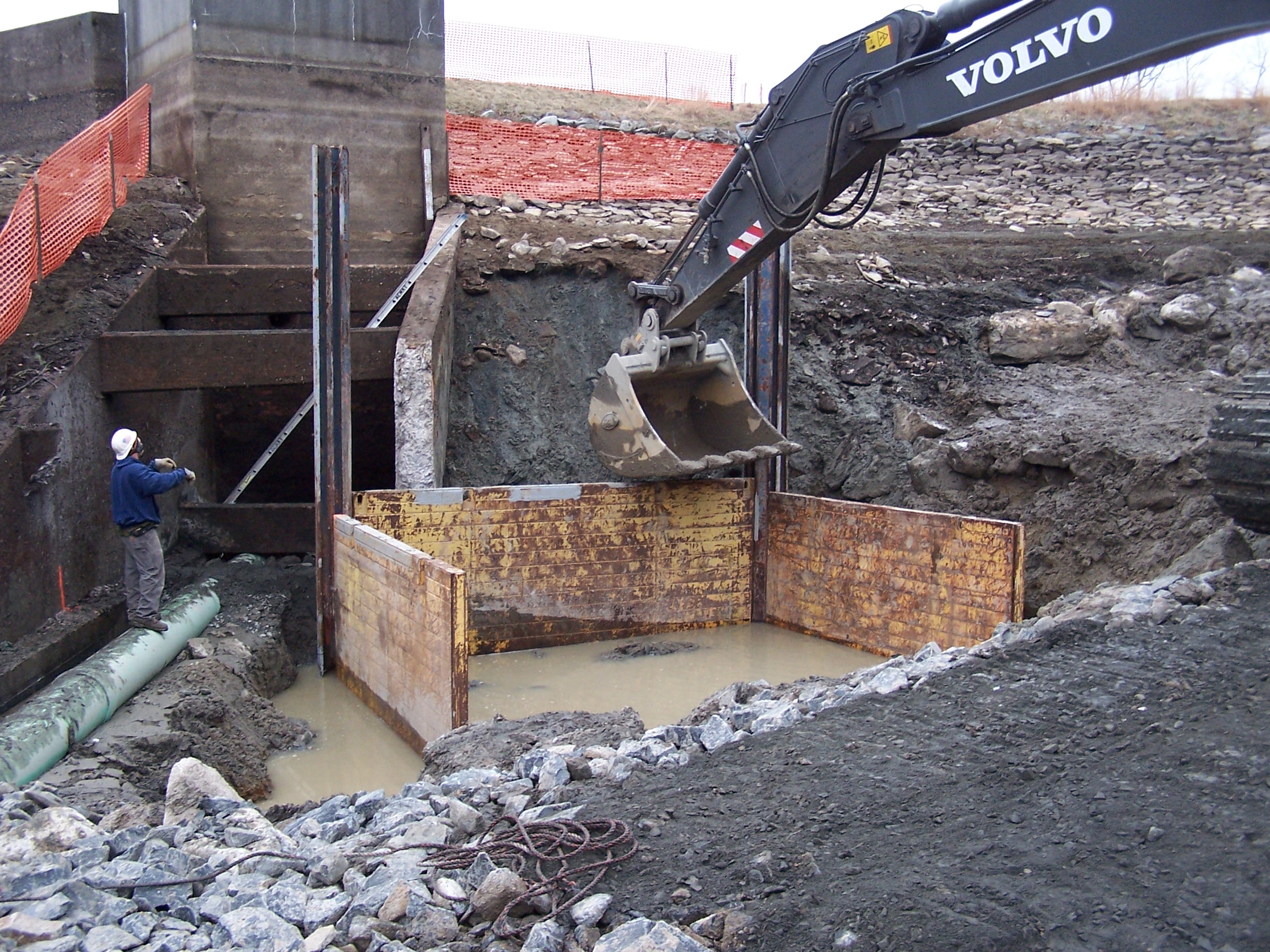
12.) The excavator was also used to push the plates into place. Excavators work great at pushing and pulling.
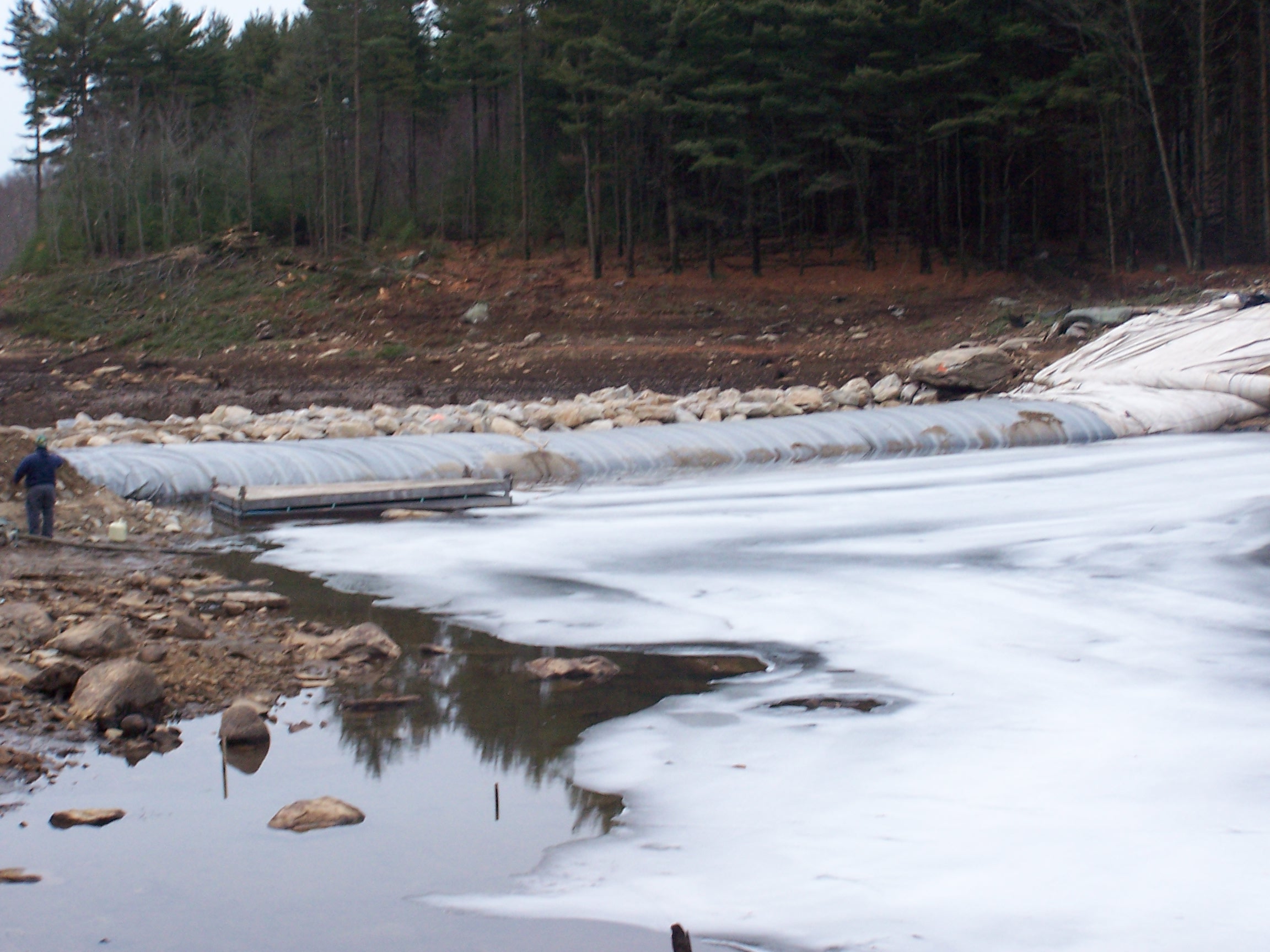
13.) Here we can see that ice and snow have built up behind the AquaDams. The snow may make slow walking, but is harmless to the AquaDams.
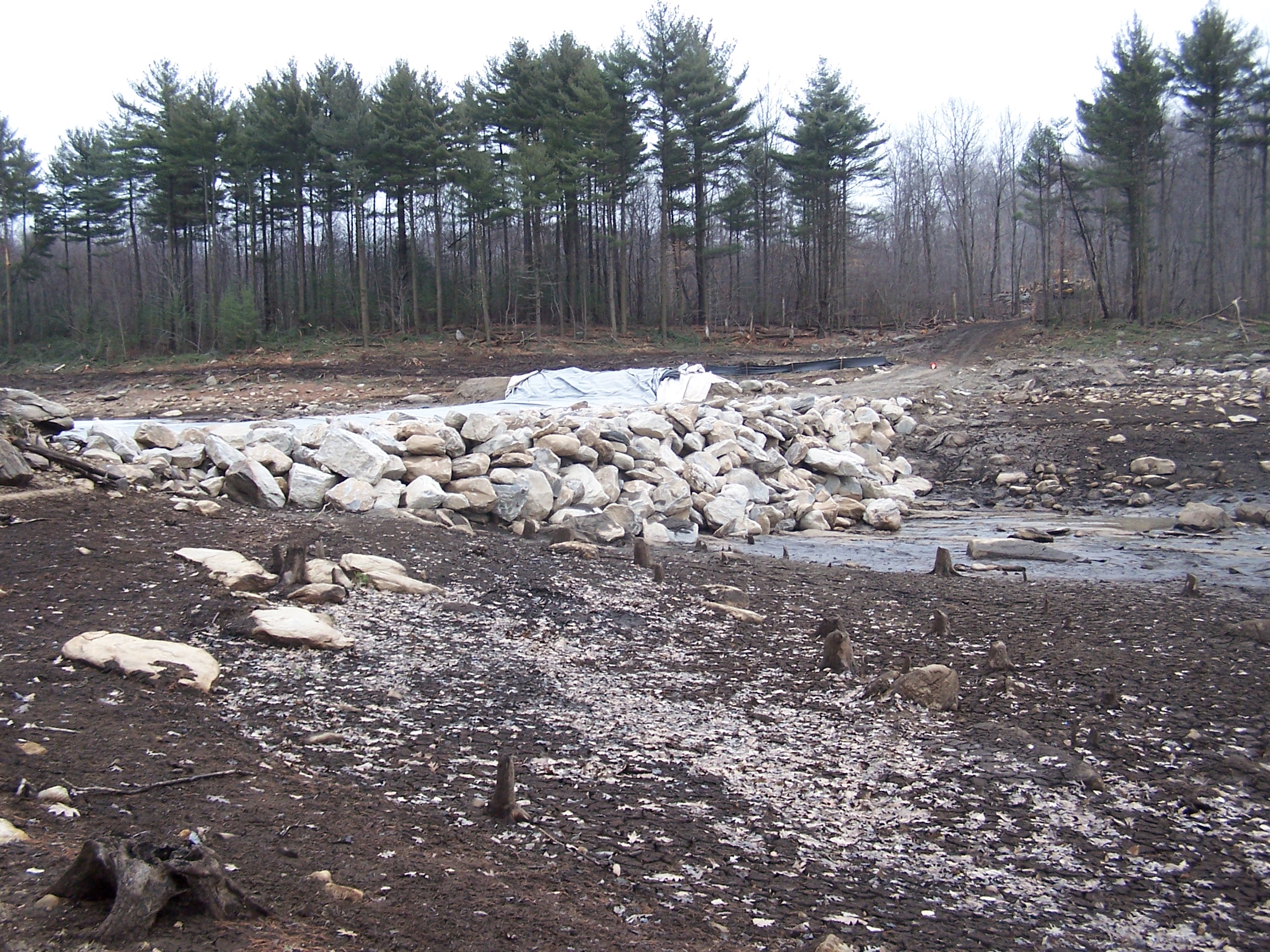
14.) This the de-watered side of the first SCE AquaDam. Workers placed non-sharp boulders up against the AquaDam for additional support.
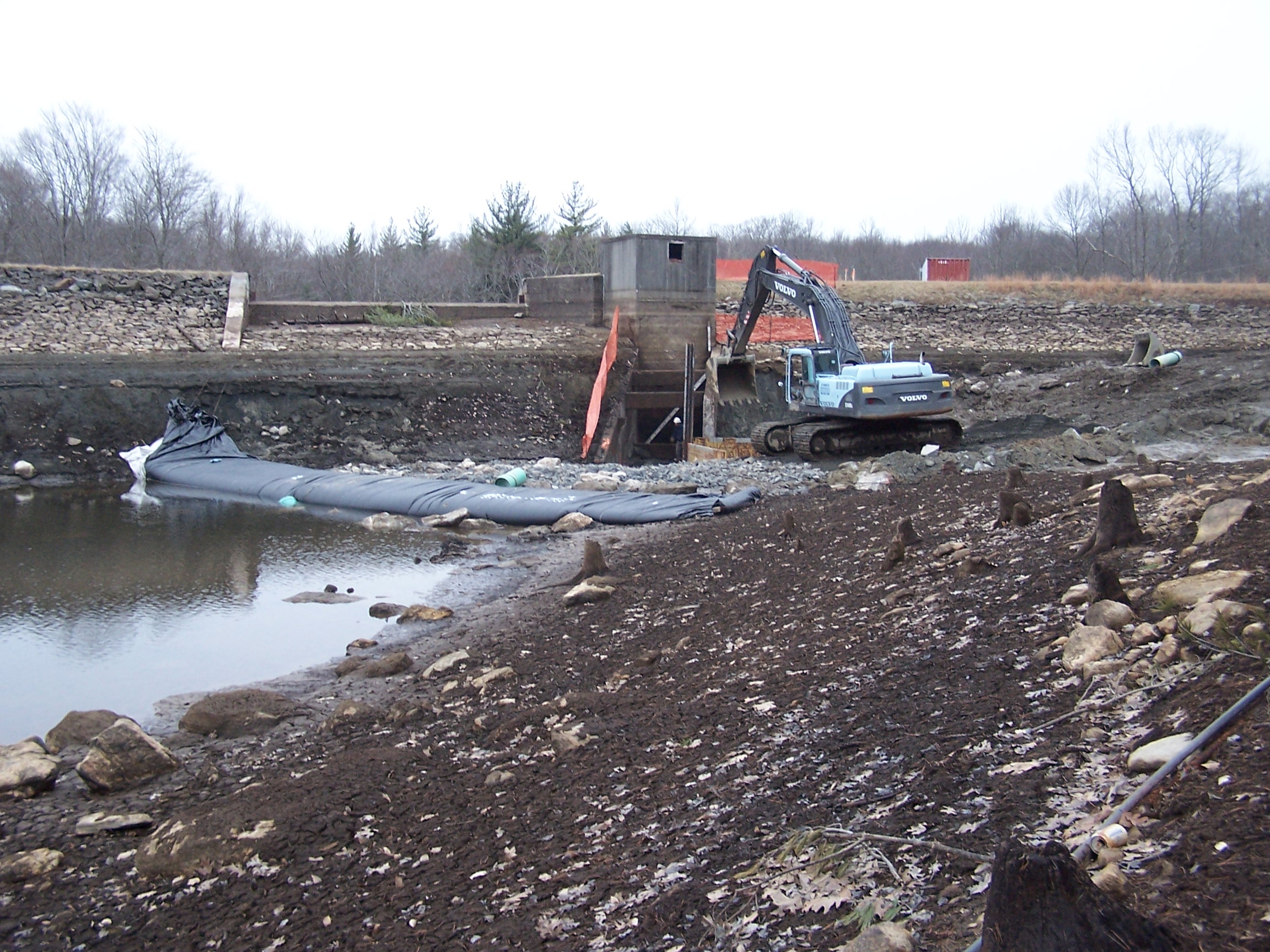
15.) The AquaDam cofferdam system has provided a de-watered work area. Wonderful job AquaDam!
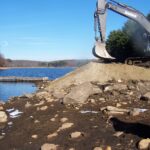
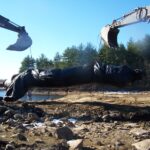
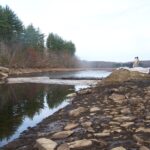
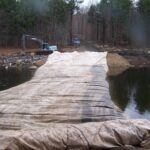
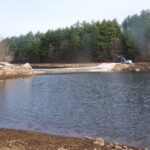
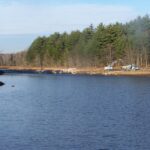
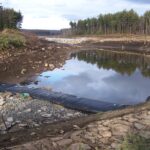
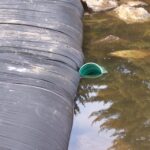
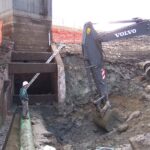
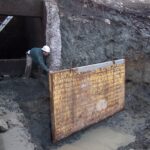
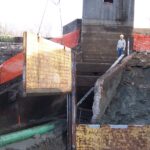
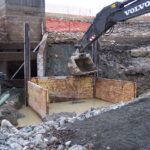
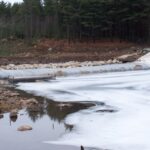
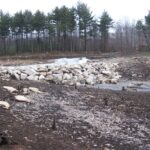
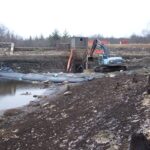
Two Single Closed End (SCE) AquaDams, Shoreline Isolation, Line Configuration
